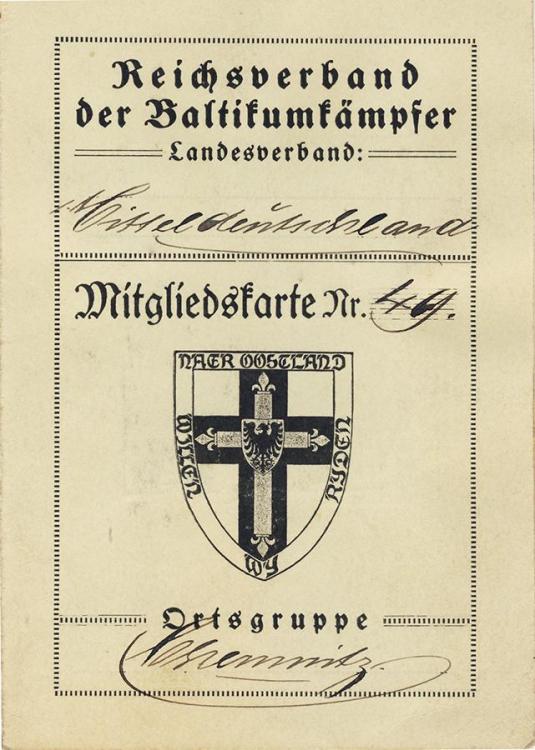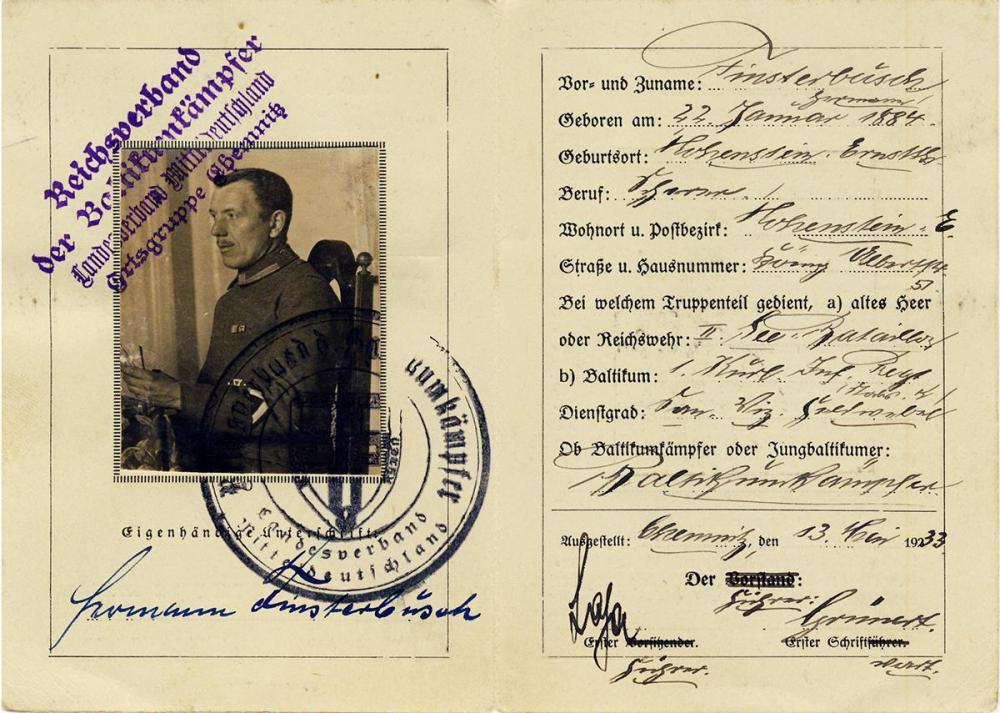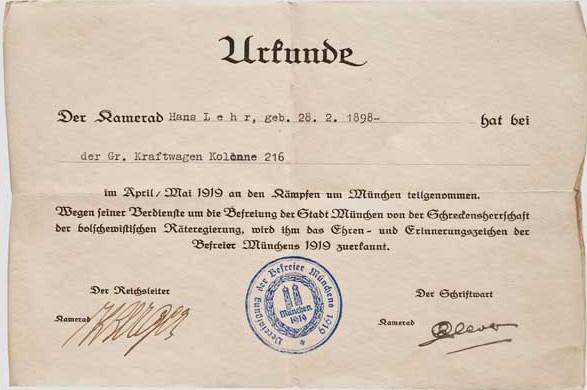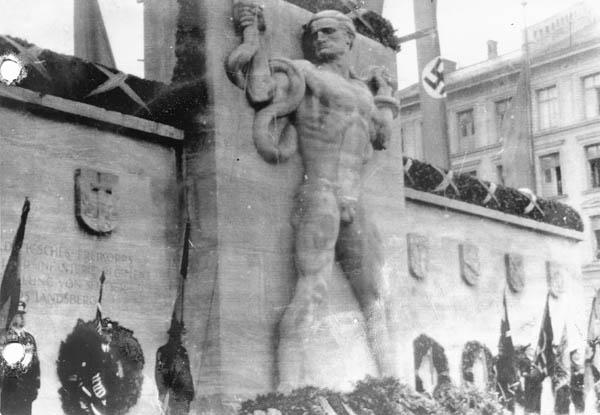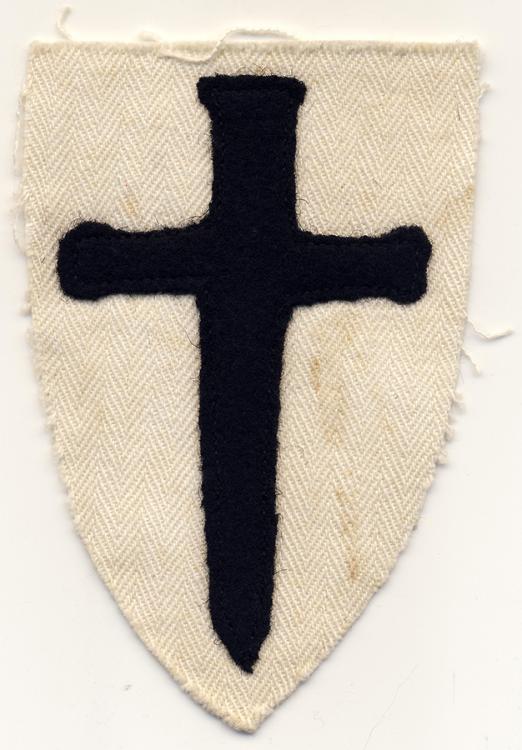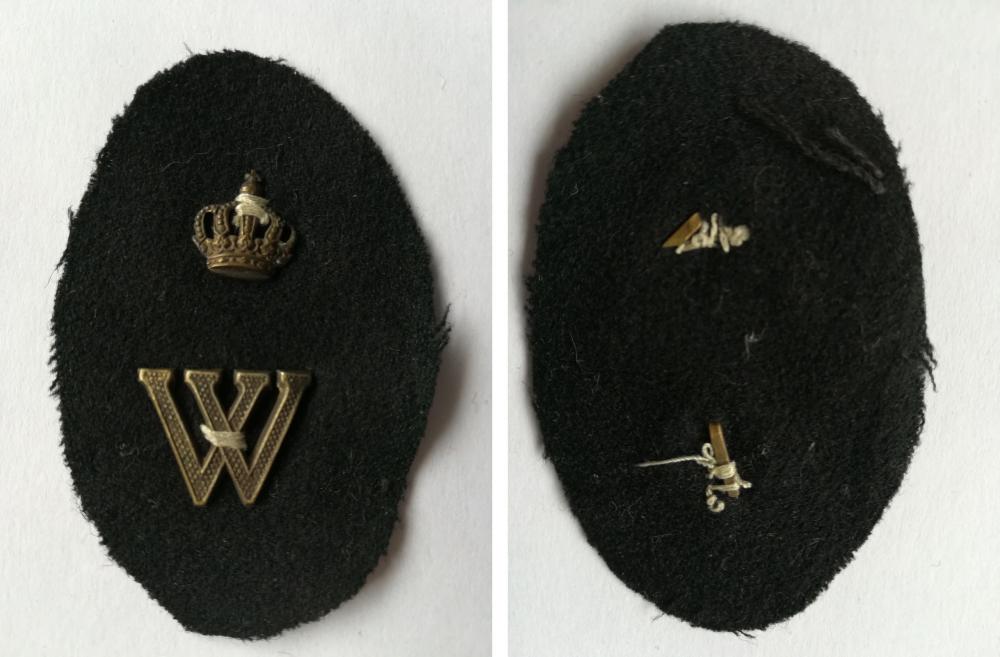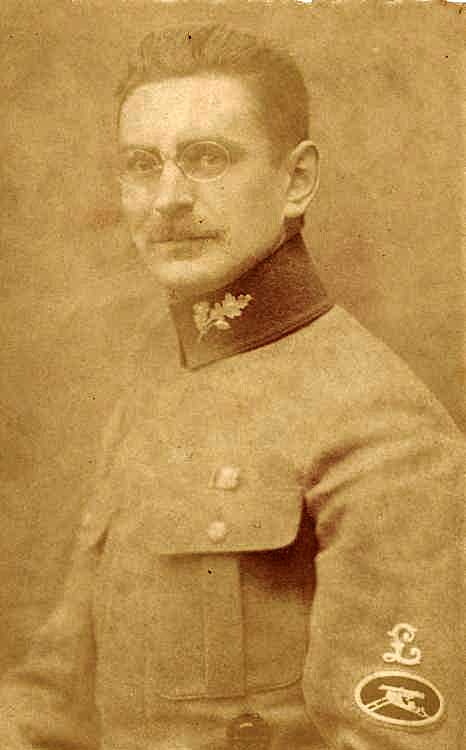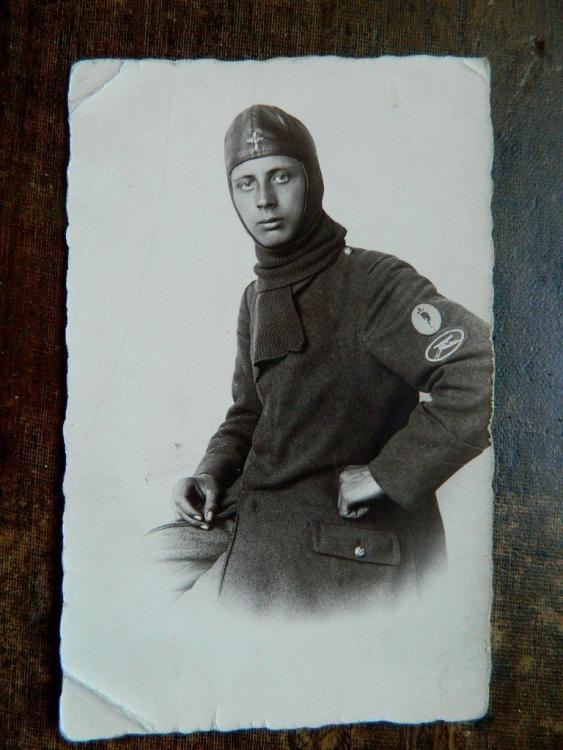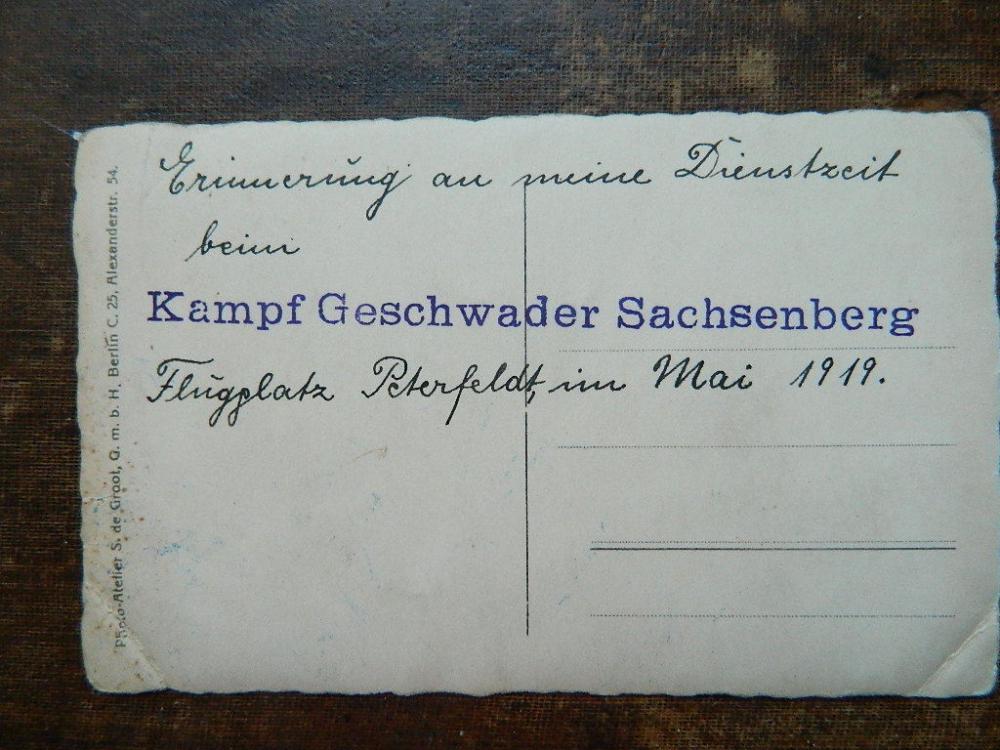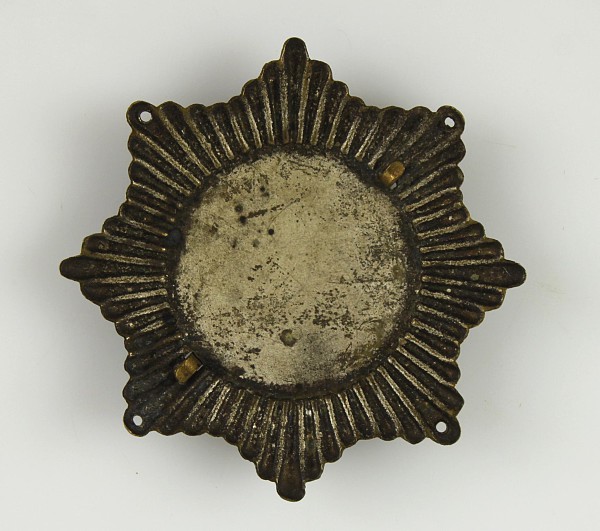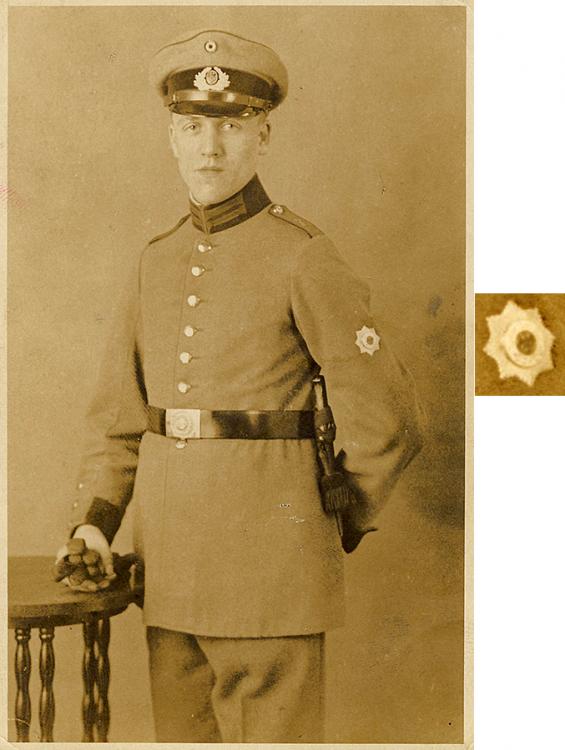
bolewts58
Active Contributor-
Posts
624 -
Joined
-
Last visited
-
Days Won
11
Content Type
Profiles
Forums
Blogs
Gallery
Events
Store
Everything posted by bolewts58
-
Basically yes. Artillerie -Flieger Staffel 101 was part of FA427. I have a Militarpass to this unit. I was mistaken. The Awaloff-kreuz only had 3 classes and yours is a 3rd class without skull. There were many variations of these made and handed out by Bermondt-Awaloff during the 1920s and 30s. Given the number handed out, it's amazing that there are so few real ones on the market. Konstantin Nikolaev writes extensively about this award in his book on Baltic awards. I'll have to struggle through the Russian and see what he says about the classes. By the way, it's also possible that your guy was a staff officer with the Freiw. russische Westarmee. But, unless the documents show up, or a photo with the bar being worn, I don't think it will be possible to identify him otherwise, even though it's a pretty unique set of awards. Brian
-
Firstly, that isn't a Deutschritterkreuz 2 Kl. on your bar, but the far rarer Avalovkreuz 4 Kl.. The Deutschritterkreuz 2 Kl. was for NCOs and enlisted men. This is clearly an officer's bar. An officer would get the pinback Deutschritterkreuz 1 Kl. Also, the ribbon for the Deutschritterkreuz 2 Kl. is plain watered black silk. Your ribbon is the Avalovkreuz black ribbon with red, white and black stripes for Germany and white, blue and red stripes for Russia on the edges. Originals of any class of the Avalovkreuz are nearly impossible to find. So, you have something pretty unique, more so because it's on a bar. Secondly, there wasn't a Baltenkreuz 2 Kl., but a semi-official version of the one-class only pin-back cross with suspension ring for wear on the medal bar. As far as I know, von Randow never received the Saint Stanislaus awarded by Bermondt-Avalov to officers of the Russische Westarmee or the St. George medal both of which are scarce to Baltic Freikorps fighters. Nor, as far as I know did he receive the SSVK medal. The black enameled Maltese cross with swords that von Randow is wearing is actually the Diebitsch-kreuz 2 Kl. Your bar is far more spectacular than the one von Randow is wearing as it's specific to both the Eiserne Division and the Russische Westarmee . It's pure speculation. But, given the two Luftwaffe long service medals and the number of Freikorps awards, it's possible the recipient of this bar was originally a Freikorps flier or at least attached in some capacity to a Freikorps squadron. The Eiserne Division had several Flieger-Abteilungen (FA 424, 426, 427, 429 and Artillerie-Flieger Detachment 101) consisting of 140 planes that transferred to the Russische Westarmee and joined the Russian 3rd and 6th Don Airforce.
-
Freikorps Insignia
bolewts58 replied to Nick's topic in Germany: Weimar Republic & Deutsche Freikorps
Der Reichsverband der Baltikumkämpfer Organization for Freikorps veterans of the Baltic Campaigns, 1919-1920. Founded as the Verein Ehemaliger Baltenkämpfer (Association of Former Baltic Fighters) in Magdeburg in 1921. In 1933, it was renamed Der Reichsverband der Baltikumkämpfer . On June 2-3, 1934 a reunion of the 36,000 members was held at Castle Saaleck where a large limestone plaque honoring the fallen of the Baltic campaign was installed in the east tower with a speech from the former Baltic commander, Graf Rüdiger von der Goltz. The association was disbanded in June 1936 by Interior Minister Wilhelm Frick. Below is the membership certificate and stickpin of Viz. Feldwebel Hermann Finsterbusch, who served in the Baltic campaign, in the II. See-Bataillon (Groeben), 1. kurländisches Infanterie-Regiment (Major v. Lossow) which was part of the Eiserne Division. The photo is contemporary to his Baltic service and shows him wearing the blue and white chevron on his left sleeve of the 1st and 2nd Kurland infantry regiments. -
Freikorps Insignia
bolewts58 replied to Nick's topic in Germany: Weimar Republic & Deutsche Freikorps
Hi elbavaro Yes I am aware of the mistake in IDing this badge which I based on the wrong ID in Haarcke's catalogue. It's actually called the Ehren- und Erinnerungszeichen der Befreier Münchens 1919 and was likely the last official Freikorps award as it was awarded beginning in 1938. Here is a pic of the document and of the monument built in 1942 by the Nazis in honor of the liberation of Munich in May 1919. -
3rd Marine brigade Lowenfeld
bolewts58 replied to dante's topic in Germany: Weimar Republic & Deutsche Freikorps
Nice group of docs. Given his service, he would have also likely been awarded the Loewenfeld Cross I and II. -
I noticed this photo in an old post from 2010 (#719) wrongly identifying this group as Freikorps Caspari. Freikorps Caspari had nothing to do with the Iron Division or the Baltic. Nor, did they have a veteran's organization of former members as all Freikorps Caspari members either went into Reichswehr Brigade 10 or the Bremen Security Police in June 1919. This photo is in fact of veterans of the Baltic Landwehr/Deutsche Legion/Iron Division which fell under the umbrella of the Verein Ehemaliger Baltikumkämpfer founded in 1922, which became the Reichsverband Baltikumkämpfer in 1933. The black sword on a white shield was originally the insignia of the Baltic Landwehr and was adopted later by the Deutsche Division and Iron Division during the Riga campaign. Here is an example of the sleeve badge seen in the photo.
-
Correct. But, they can't rightly be called 57er as some collectors do, as that only refers to the redesigned and issued replacements of Third Reich awards. But, still as a result of the 1957 re-issue of TR awards, there was a renewed demand for replacement pieces from the Imperial period. Afterall, WWI German vets would have only been in their late 50s early 60s at that point. The Stahlhelmbund had been re-founded in 1951 and there were a lot of reunions of both WWI and WWII vets that started happening in the early 1960s. So, there was a market for replacement pieces for lost awards or maybe just for newer and shinier versions of the often worn-out awards the vets still had, so they would look their best at a reunion parade. Therefore, as stated, the cross can be viewed as a post-1945 private-purchase replacement and therefore original, just not period.
-
Stalhelm flag, triangular style
bolewts58 replied to medalworld's topic in Germany: Weimar Republic & Deutsche Freikorps
Since it's lacking the clips that would definitely identify it as a car pennant, it could just as easily be part of bunting or a desk flag. I've seen them used in all 3 ways. -
Stalhelm flag, triangular style
bolewts58 replied to medalworld's topic in Germany: Weimar Republic & Deutsche Freikorps
If genuine, it's likely a flag that was used as bunting. Probably not a car flag. These are heavily reproduced. So, it would be good to see close-ups of the stitching and the material used. -
Freiwilligen Bataillon Nr. 26
bolewts58 replied to dante's topic in Germany: Weimar Republic & Deutsche Freikorps
Freiw. Btl. 26 became part of Freiwilligens Regiment/Detachment Klüfer commanded by Major Theodor Karl von Klüfer. The unit's collar badge was a bent silver bear claw. -
Interesting combination... :-)
bolewts58 replied to Chris Boonzaier's topic in Germany: Weimar Republic & Deutsche Freikorps
Here's another photo of a member of Freiwilliges Landesjägerkorps wearing a MGSS badge with the black backing (usually black velvet), as was a custom among many Freikorps units. I personally believe that the MGSS badge continued to be awarded by the Freikorps and the Provisional Reichswehr and was usually worn with a black backing, instead of a Feldgrau backing. -
Interesting combination... :-)
bolewts58 replied to Chris Boonzaier's topic in Germany: Weimar Republic & Deutsche Freikorps
Agree. The buyer of this card has together with a handful of others driven up the prices on Freikorps postcards in the last few months and ruined the market. Cards that 6 months ago were selling for 30-100 EUR are now selling for double or triple that. It's become crazy. -
Interesting combination... :-)
bolewts58 replied to Chris Boonzaier's topic in Germany: Weimar Republic & Deutsche Freikorps
He may have gone to a "Fliegerschule' late in the war, in December 1918 or even as a volunteer in early 1919. The pilot schools continued to train through to September 1919. There were around 35 or so Freikorps 'Flieger Abteilungen' operating in the Baltic, Silesia and on the borders of Prussia. I'll post the pictures from eBay, in case the link goes dead. A bit of the history of Kampfgeschwader Sachsenberg: The German 1st Guard's Reserve Division had an aviation unit attached to it called the Kampfgeschwader Sachsenberg. This regiment was formed on the basis of a demobilized field regiment of marine aviation (Marinefeldjagdgeschwader). It contained three squadrons: FA 413 (reconnaissance), FA 416 (fighter) and FA 417 (assault). Lieutenant Gottshard Sachenburg was a former naval pilot of the Kaiser's army and had shot down in 1917-1918 more than 30 British aircraft. This regiment also had such celebrated aces as Joseph Jacobs (47 aerial victories) and Teodor Osterkamp. The Sachenburg command counted upwards of 50 experienced pilots and observers. Its 30 crews flew the newest all-metal monoplanes of the Junkers D-1 and CL-1 types. These machines were produced for the German Air Force at the close of the World War . The regiment also had the very well proven wooden biplanes, like the Halberstadt, DFW, LVG , Rumpler,Fokker D-VII and D-VIII types! Sachenberg later wrote that thanks to the endurance of the phenomenal Junkers his regiment worked without interruption or breakdowns during their few months in the Baltic. The all metal Junkers were exclusive to the Germans. The Reds, Whites or even the Anglo-French Interventionist force had nothing comparable. The Sachenburg regiment contained the best pilots and aircraft in the Civil War. Because of this, they had no rivals with which to seriously fight. After eight months on the front; February to September 1919, they had not been in one air battle! By March 1919, their central base was an airfield in Vaynode (more west of Libau), where during the WW1 the enormous hangars for zeppelins were built. Sachenburg made use of them as airplane hangars. From there the German air unit moved to Alt-Auts and Petersfeld (more south of the River Dobel). Here, the Germans flew reconnaissance and bombardment sorties on the Red forces. As far as it is known, they lost at least two Junkers, one of which force landed in a village behind enemy lines due to engine trouble and the other (faulty and worn) was simply abandoned during the retreat to the airfield at Alt-Auts. The Reds took both aircraft to Moscow for careful study. -
Freikorps Insignia
bolewts58 replied to Nick's topic in Germany: Weimar Republic & Deutsche Freikorps
100% original and likely Third Reich era manufacture. It looks to be zinc. If so, it was probably produced between 1943-1945. I like it! -
Bavarian Volkspartei...
bolewts58 replied to Chris Boonzaier's topic in Germany: Weimar Republic & Deutsche Freikorps
Well in the Freikorps wheel-house. The BVP had a para-military wing, "Bayernwacht" that was a successor to "Einwohnerwehr Bayern". Their armbands and lion badge turn up often for sale and in Freikorps collections.

